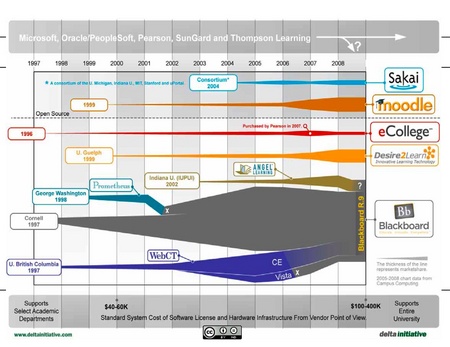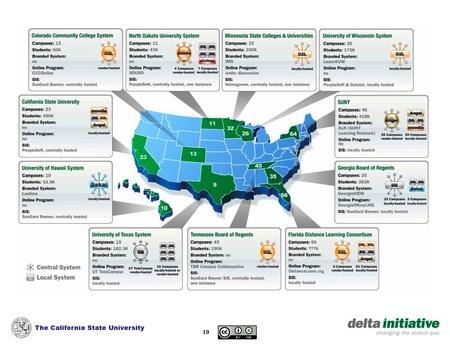The State of Learning Management in Higher Education
The California State University, via Delta Initiative, an independent consultant, released a report on the state the learning management systems (LMS) market. The report is available as slides and an hour-long WebEx presentation archive that helps give context to the slides. A highlight of the report are the rich and clear graphic representations of the market, such as the image show below:
The presentation archive includes some interesting comments from the Delta Initiative presenter, Phil Hill, that are not obvious from the slides:
- almost all of the LMS originated at universities in the late 1990s
- most of the innovations in the LMS occurred between 1997-2004
- the cost per campus has risen from $40k to $60k to as much as ten times that amount
- a number of commercial ERP and publishing vendors poised to enter the market
- unclear how much Web 2.0 technologies will disrupt the LMS market
- the LMS market is not a healthy market
Another presenter, Molly Langstaff, runs through a number of installations at large state schools and trends, including an observation that the centralization of LMS systems are becoming more problematic because the current centralized LMS systems can no longer handle the loads on the system.
A variety of LMS are in use at Columbia: the centralized offerings are CourseWorks, a derivative of Prometheus, and the open source Sakai in a pilot mode pending funding. Other LMS in use on campus include Angel at the Business School and Moodle as a testbed for the Global Masters in Development Practice program.




